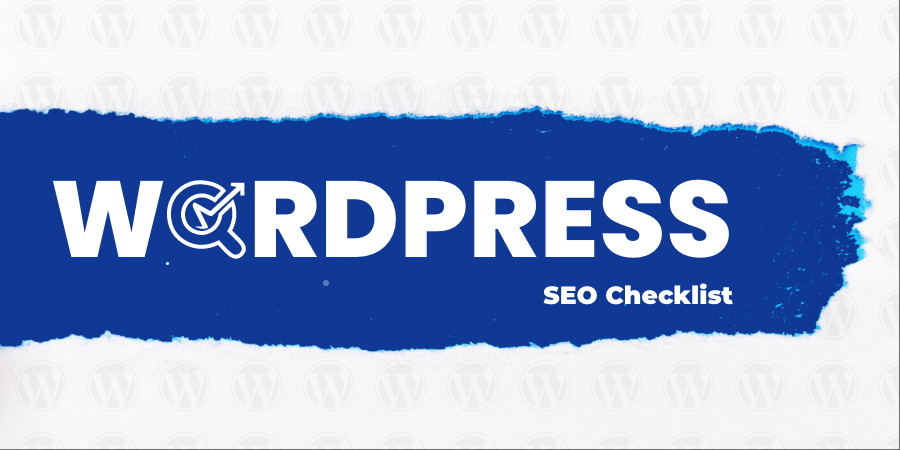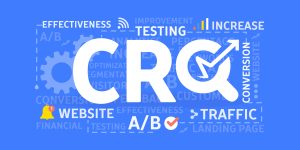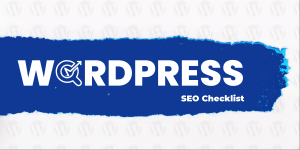When you use WordPress for your website, optimising it to rank high in search engine results is very important. Most people research businesses online before purchasing or visiting them, so it is essential to have a website that appears in search results. How can I get started with SEO? For this purpose, SEO Services in London can optimise your website with full WordPress SEO services.
For top search engine rankings, your SEO strategy should cover every aspect of your website. We’ll provide you with a WordPress SEO checklist today to help you increase your site’s search engine ranking and expand your base of clients. Let’s get started.
What is WordPress?
The most popular content management system is WordPress, which powers 43.3% of the internet and many websites you visit daily. The WordPress CMS is flexible for e-commerce, portfolios, and company websites. WordPress works well for both small and large websites in terms of usability and flexibility.
What is WordPress SEO?
While WordPress CMS saves you time and provides best practices without experience, ranking your website on Google requires effort. Without an effective SEO strategy, WordPress cannot be used as a stand-alone solution.
If you don’t have serious technical issues that prevent crawling and indexing, your CMS choice won’t affect your rank. The WordPress platform takes time and effort to use; don’t think of it as a magic bullet. SEO can become quite technical very quickly, but WordPress’ elegance makes it easy even for people without much technical knowledge to understand.
When you use WordPress, you won’t have to change your SEO strategies. However, you also need good content and links, proper optimisation, and no technical difficulties. Your WordPress site already takes care of most SEO fundamentals, so the advice you’ll find below will help you apply growth-driving strategies specifically to WordPress.
You must first cover a few fundamentals to discover how to optimise your WordPress site and enhance your organic traffic.
The WordPress SEO Checklist: What you Need to Know
WordPress websites with relevant, informative, and optimised content will rank highly in search engines. Interested in learning about WordPress SEO? Following are some actions you can take to optimise your WordPress site:
Choose a Reliable Hosting Provider
When choosing a host for your website, make sure you choose one with good site speed, uptime, and security. Speed is a key factor in SEO performance for your WordPress site, and both low uptime and security flaws can negatively affect its performance. If you choose the cheapest option, you will likely encounter performance issues.
Today, you can host your website with a variety of web hosting services. You might find the following types of website hosting helpful:
Shared Hosting: Hosting your website on the same server as other websites is known as shared hosting. Since you share the costs with other companies, this option is more affordable, but your website may load slowly.
Dedicated Server Hosting: You can’t compare shared hosting to dedicated hosting. If you choose this option, you can manage your website yourself on a private server. The host will give you greater control, but it’s more expensive. You will have greater control over your host, but it is more expensive.
Managed Hosting: The managed hosting option is another way to host your website. You’ll get the hardware you need from your hosting company.
Cloud Hosting: The cloud is another option for web hosting. It allows you to distribute resources across multiple servers without investing in infrastructure. Scalability is another feature of this solution.
Cloud or managed hosting is generally the best option for SEO. They fit your budget and help you raise your website’s search engine ranking.
Choose an SEO-friendly WordPress Theme
Your initial WordPress installation will almost certainly display the Twenty Twenty theme. It’s unlikely that you will want to use this for your website. The dashboard offers thousands of free and premium themes but avoids those that aren’t SEO-friendly. Many themes claim to be SEO-friendly, but they often come with scripts and plugins you won’t use and will slow down the speed of your site.
Check a theme’s demo with Google’s web.dev tool before installing it to see if it performs well. Hopefully, this will assure you that your selected theme won’t hinder your progress.
Use SEO Plugin
You can optimise your WordPress site with WordPress SEO plugins. You can increase your ranking with SEO plugins that make your website more search engine friendly.
In terms of WordPress SEO plugins, Yoast SEO is the most popular. Using this plugin, you can optimise meta tags, improve page performance, and rank your website higher in search engines.
Select the Right Keywords
Next on our WordPress SEO checklist is to select the right keywords. Users type keywords into the search field to find relevant results when conducting searches. Optimise your WordPress sites for relevant terms to get your company found online.
How can you define keywords that are relevant to your pages? To find keywords, you should use a keyword research tool. Long-tail keywords are more precise and bring in more relevant traffic. So, you should research the keywords you want to rank your page for before you begin composing fresh content or optimising your website.
Make your URLs SEO-Friendly
Optimising your URLs is essential if you want to use WordPress SEO. Users and search engines benefit from your URLs because they provide crucial context. When you click on a link from the search results, the URL shows where you are on the company’s site.
In the absence of optimised URLs, this issue frequently occurs. By optimising your URLs, you can boost your website’s search engine ranking.
Optimise the Load Time of your WordPress Website
To learn how to optimise your WordPress site, examine its load time. You should add this approach to your WordPress SEO checklist. Companies lose $2.6 billion annually due to slow-loading websites.
Google PageSpeed Insights lets you check the loading speed of your website. This free tool will give you a full understanding of what is slowing down your website and how to make improvements.
Are you wondering how to implement Google’s advice? Think about hiring a reliable SEO agency to assist you in reducing your website’s loading time.
Create Internal Links on Your WordPress Website
It is also important to check off internal links on your SEO checklist for WordPress. You can index additional pages on your website with internal links. It will keep website visitors engaged and encourage them to visit other company pages
The following tips can help you link internally successfully:
- To ensure that users don’t miss the anchor link text, it should at least be two words long.
- Link to individual pages only once.
- Ensure that the anchor link text is relevant to the link.
- Keep your content simple, and don’t overload it with links.
Verify your Website’s Visibility Settings
Make sure your website is visible to search engines by checking its visibility. Without search engine accessibility, crawlers cannot crawl and index a website.
You can see if your website is visible by clicking Reading under Settings. A checkbox will appear next to the category “Search Engine Visibility.” Leaving this box selected will prevent search engines from crawling and indexing your site.
Create an XML sitemap and Submit It
WordPress website optimisation continues with submitting your XML sitemap. The XML sitemap contains a list of all the important pages on your website so that Google can index them.
Your website’s XML sitemap is automatically generated by WordPress, but the function isn’t very comprehensive. Because of this, it’s hard to control which pages appear on your sitemap and which do not. With the help of your SEO plugin, you can create a customised XML sitemap. Your SEO plugin will simplify updating your XML sitemap for search engines.
Optimise your Page Headings
Website H1 headings explain what a page is about to users and search engines.
Generally, you should use no more than one H1 heading. It is also helpful to use H2, H3, and H6 headings to break up the content and make it more readable.
To create search engine-friendly headlines, follow these guidelines:
- Be sure to include your targeted term in the heading.
- Give readers a hint of what to expect with your headlines.
- Don’t stuff your headlines with keywords.
- Your page’s title should only have one H1 tag.
These recommended practices will enable you to develop headings that boost WordPress SEO.
Optimise Title Tags and Meta Descriptions
To drive traffic to your WordPress website, you must optimise the title tags and meta descriptions. Use optimised title tags and meta descriptions, so users click on you instead of another listing. How can you optimise these tags?
Here are some guidelines for optimising title tags:
- Your main keyword should be at the front.
- Make sure your title tag reflects what your page is about.
- Your title should not exceed 60 characters.
- Use catchphrases such as “Free” and “Amazing” to attract visitors.
- Make it unique and compelling to entice customers.
Best practices for optimising meta descriptions:
- Mention the main keyword in your description.
- You should keep your description to 155 characters.
- It is important not to overuse keywords.
- Give a brief description of your pages.
Make Use of Image Alt Text
You need to add alt text to your images in order to improve your WordPress SEO. The alt text gives context, so it’s important for search engines and visitors. Though search engines cannot see images, alt text helps them read them. This way, you can describe what’s in the picture, so search engines better understand its context.
The benefits for users are twofold. Whenever an image doesn’t load, alt text tells users what it was supposed to be. Users of screen readers can read the alt text for the image, so they know what the picture is. Be descriptive with your alt text and focus on describing the image. It is best to avoid adding keywords if it seems forced.
Produce Quality Content
Both SEO and marketing revolve around content. Search engines love engaging content. If you want to rank highly, make sure it engages your audience too. Creating long-form content improves search engine performance and aids in backlink creation. More in-depth articles may rank for long-tail search terms and additional target keywords.
You should focus on evergreen content and regularly update data and context. You should combine evergreen content with trending content if you want your site to gain traffic.
Make Smart Use of Schema and Structured Data
Using the right schema can increase your click-through rate (CTR) by showing more relevant information on your site. A study claims that schema increases click-through rate by 35%. Simple schema markup options are available in several WordPress themes.
Add schema to your website with the free Schema plugin from WordPress. Furthermore, it makes your content more understandable to Google and other search engines.
Your Opening Paragraph Should Include Target Keywords
In your first paragraph, you set the tone for the rest of your article. Additionally, search engine crawlers look for keywords from top to bottom. When Google discovers your target term immediately, it considers your content relevant.
Use caution when selecting the number of keywords to include in your introduction. Forced or irrelevant keywords irritate visitors, resulting in a higher bounce rate and long-term SEO harm.
The Takeaway
You need SEO for your WordPress website to rank high in SERPs. Fortunately, it’s not hard to learn. There are many built-in SEO tools in WordPress, and sophisticated SEO plugins give you more options to enhance your SEO performance.
The strategies we’ve covered in our WordPress SEO checklist will increase your website’s traffic and ranking. If you want to get the best results for your website, you need to test out several SEO strategies.





